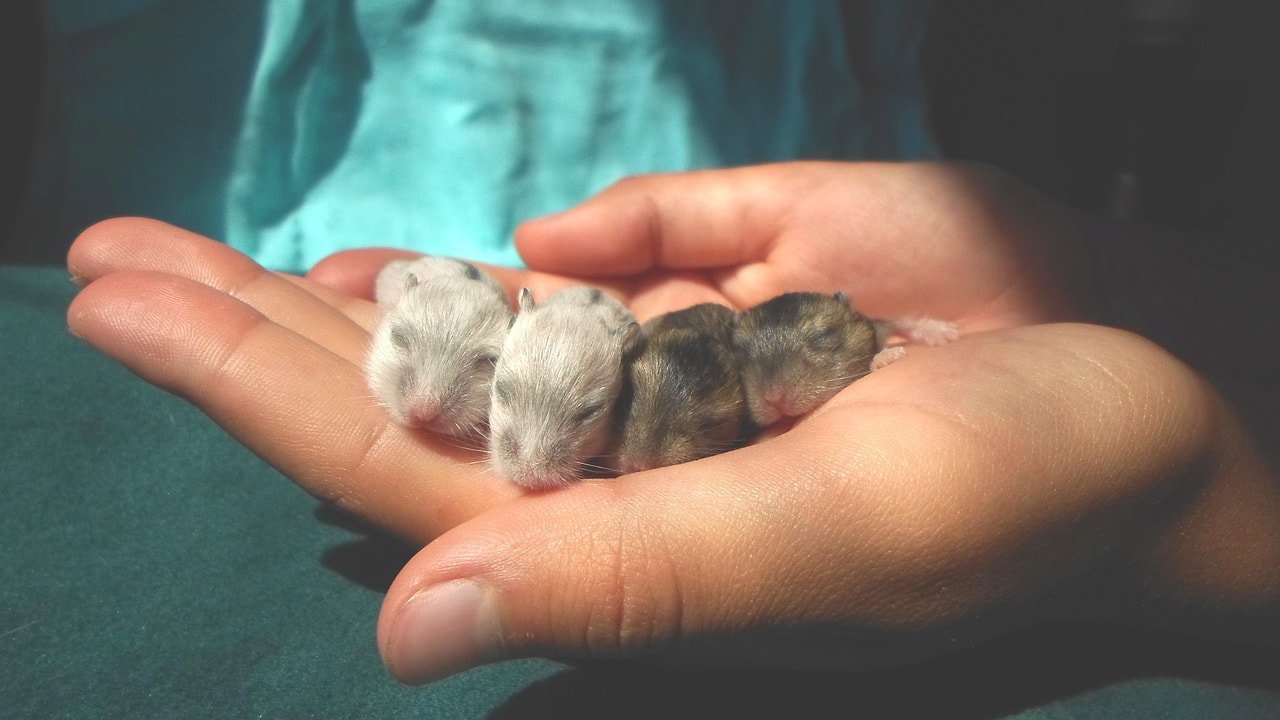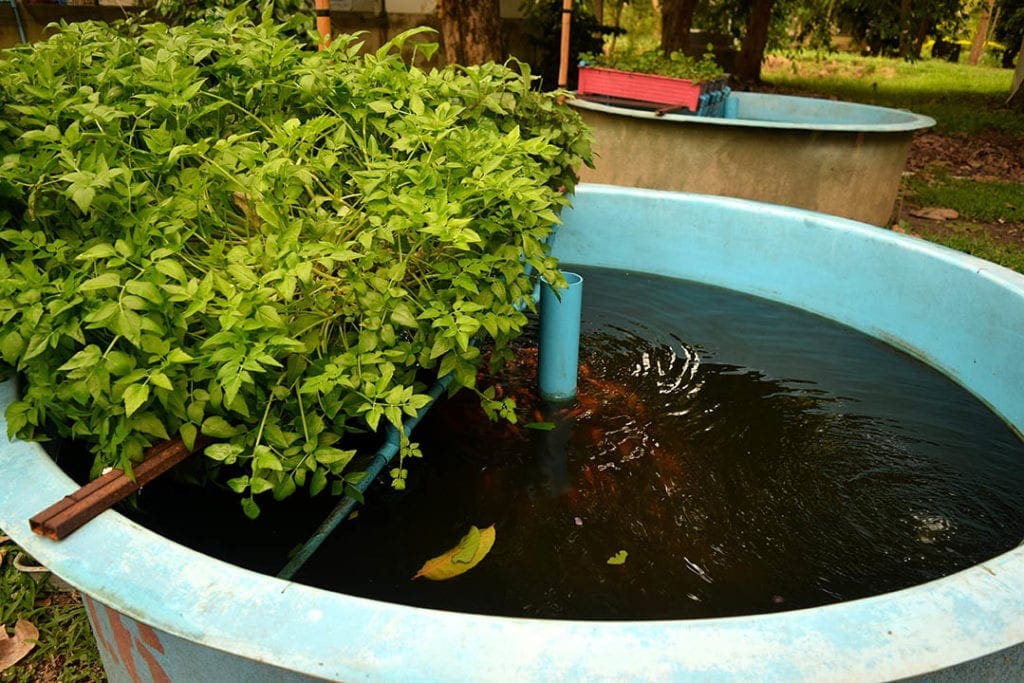VET APPROVED

The information is current and up-to-date in accordance with the latest veterinarian research.
Learn more »Click to Skip Ahead
If you have a pregnant hamster or are thinking about breeding your rodent, you probably have many questions, with the biggest one likely being how many babies they might have. The short answer is that you can expect an average of 4 pups in a hamster litter. But keep reading for a more detailed look at the reproduction cycle of these interesting animals, so you can be better prepared to manage hamster pregnancy, pup care, and rehoming.

How Large Is a Hamster Litter?
Hamsters typically have four to six pups per litter, but the number can often go up to 12 and rarely, as large as 20. The number of offspring can also fall if the mother decides to stop raising them or eats them.
The species of hamster has the biggest impact on the number of offspring you can expect.1
| Type | Gestation Period | Litter Size |
| Campbell’s Dwarf Hamster | 18–21 days | 4–8 |
| Chinese Hamster | 18–23 days | 4–12 |
| Djungarian Hamster | 18–22 days | 2–10 |
| Roborovski Hamster | 20–22 days | 3–6 |
| Syrian Golden Hamster | 15–18 days | 6–12 |
As you can see from the chart, the Roborovski, Djungarian (Winter White), and Chinese hamsters can all produce tiny litters of one or two offspring, but the number is more frequently closer to six.
Hamster Litter Dangers
It’s important to maintain a stress-free and quiet environment for the hamster mother during the first week or so after she gives birth. Separating her from other animals might also be a good idea. If she is upset or disturbed during this sensitive time, she might cannibalize her young. Additionally, when stressed, some hamster species, particularly Syrian and Dwarf hamsters, may instinctively try to protect their pups by carrying them in their cheek pouches. However, this behavior can unintentionally lead to the suffocation of the pups.2
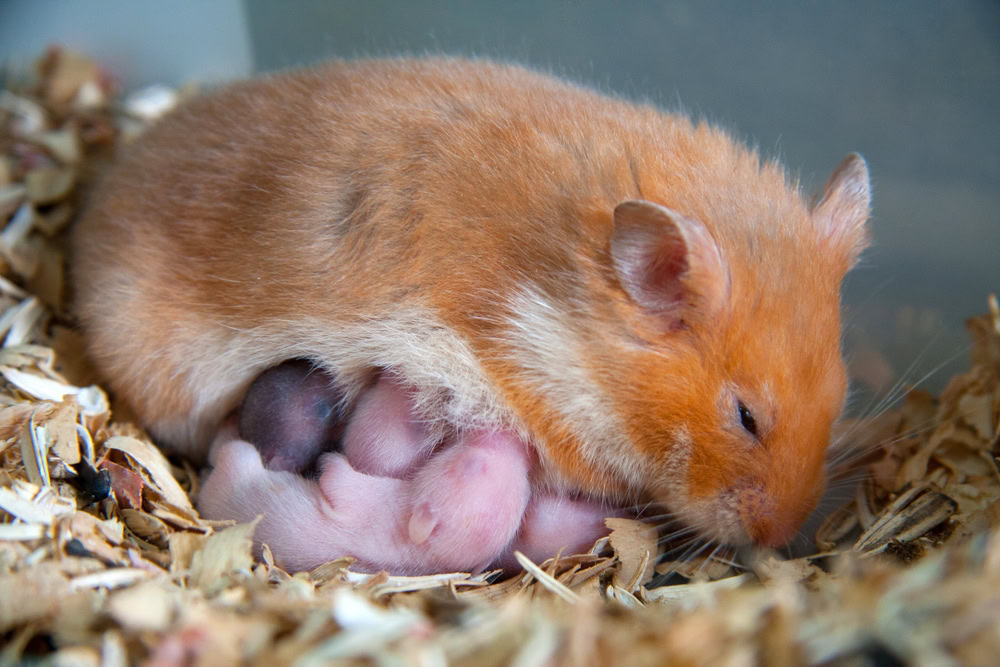
How Can I Tell If My Hamster Is Pregnant?
As you might suspect, you will usually notice your hamster getting larger than normal with a slight bulge in her abdomen. You can also expect the hamster to become restless, and she might be more active than normal at unusual times of the day. You may also notice some bleeding in the vaginal area when the birth is close.

How Can I Prepare My Hamster for Birth?
First Veterinarian Visit
The first thing that we recommend that you do upon learning that your hamster might be pregnant is to take her to the vet to have her looked over. After a prenatal checkup, the doctor can help give you advice that pertains directly to your pet, and they might prescribe vitamins or other supplements to ensure a healthy delivery.
Bedding
One of the first things you will want to do at home is put extra bedding into the cage. Bedding is not expensive, and it will help make your pet more comfortable for the roughly 20 days that she’s pregnant, which can help lead to a healthier pregnancy and postpartum period.
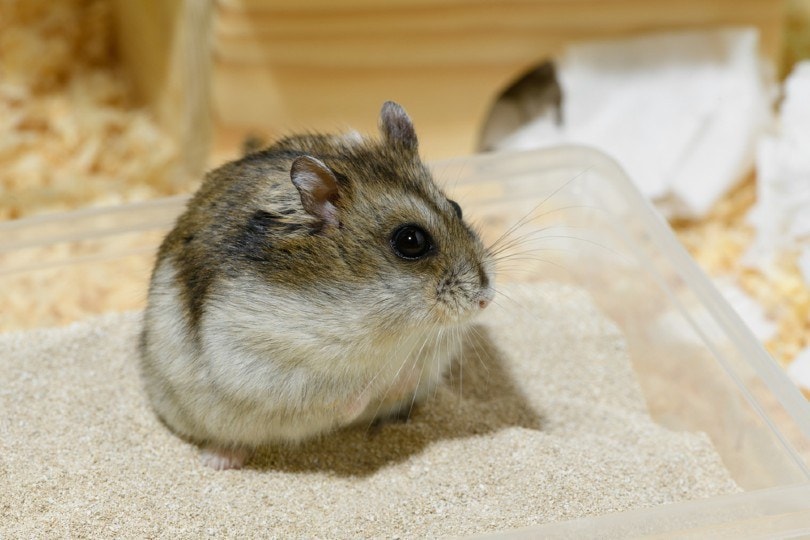
Diet
Make sure the hamster has plenty of high-quality food and access to all the water she needs. You can expect your pet to eat much more than usual, and she will do so at strange times of the day, so keep vigilant about refilling the food and freshening the water. Consult your veterinarian for any dietary adjustments or supplements that might be needed to ensure your hamster has a healthy pregnancy. This visit can also help you get advice about helping the mother through the postpartum period.
- Related Read: Best Hamster Foods
Follow-Up Vet Visit
If the mother has stopped bleeding and the pups are nursing normally, it is best to disturb them as little as possible during the first week to ten days. Approximately 10-14 days after the babies are born, it is important to take the mother and the litter to the vet to ensure everyone is healthy and developing correctly.
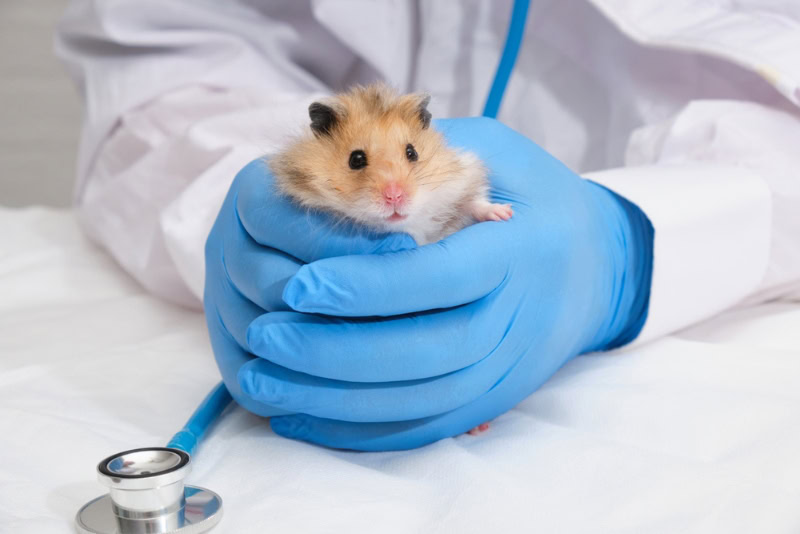

When Can Hamsters Give Birth?
Most hamsters can start to breed around 8 weeks of age, and the gestation period is usually around 15-23 days. The surprising part is that they can get pregnant again within 24 hours of giving birth, so it is important to separate her from the males.
Also, make sure you separate males and females in your new litter before they turn 4 weeks of age, or else you can wind up with more hamsters than you expected.
Will the Father Eat the Offspring?
Unfortunately, the father hamster may eat the children in an attempt to get the mother’s attention, and it won’t be long before he sees the offspring as rivals or competitors. Once he sees the children as an enemy, he may turn violent, so we recommend separating the male except for mating to minimize risk.
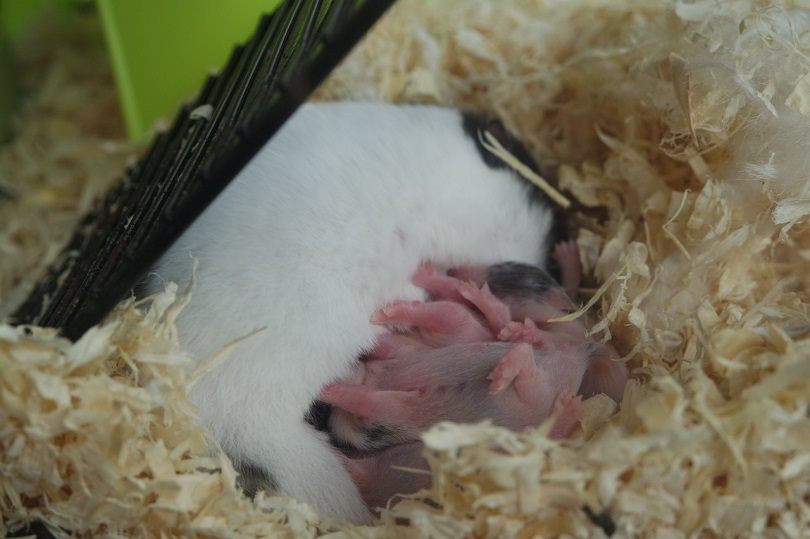
How Long Do Hamsters Live?
Lifespan depends on the type of hamster, but most live 2–3 years on average, with some living a little longer if they receive proper care.
What Care Can I Provide for the Pups?
- It’s best to minimize contact with the offspring for at least 2 weeks after birth. Touching the babies can transmit an odor that’s unfamiliar to the mother, which might put them in danger.
- Only clean wet areas of the habitat to minimize interruptions.
- Keep the area as quiet as possible.
- Placing a blanket or towel over the cage can improve the hamster’s sense of security.
- Avoid making sudden, unexpected noises.
- Begin adding solid food that you soften with water after about 10 days.
- Separate any male and female hamsters before they turn 4 weeks old.


Final Thoughts
Hamsters have an average of six to 12 pups per litter, with most having four, though the actual number can vary significantly, with some producing as many as 20. It depends on the species, genetics, maternal age, and overall health. They breed quickly, and it can be hard to manage, so most experts recommend separating the males and females unless you intend to mate them to produce offspring. Most hamsters can become pregnant at only 4-8 weeks old and will remain fertile for almost their entire lives.
Featured Image Credit: etafotok25, Pixabay
